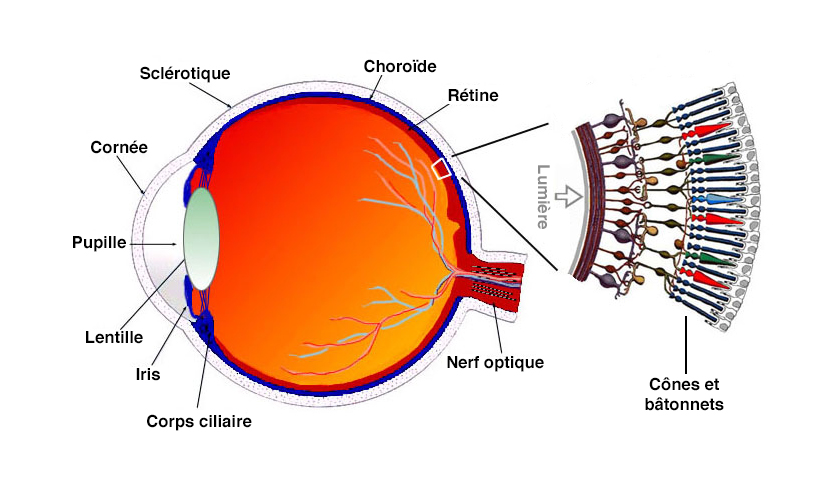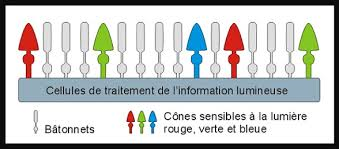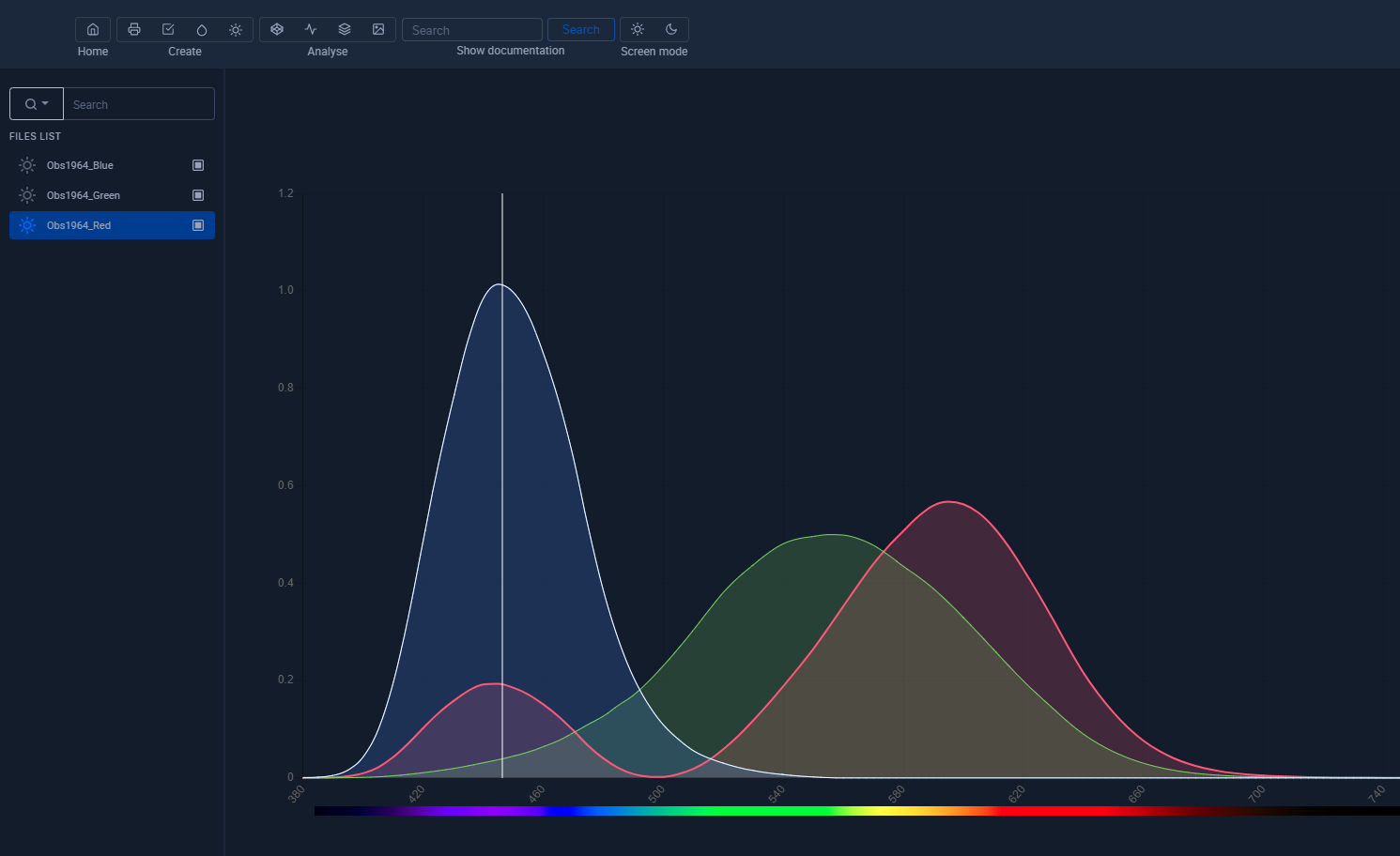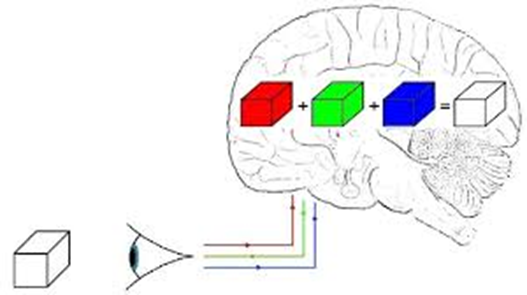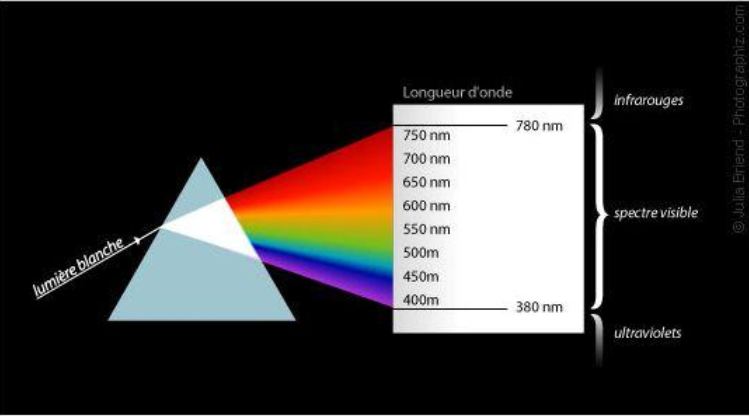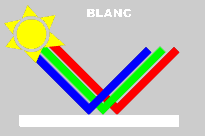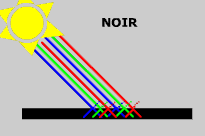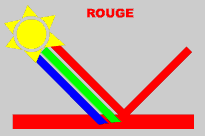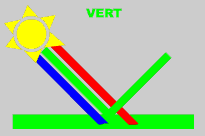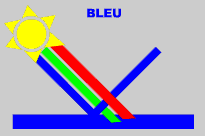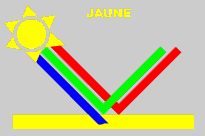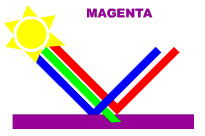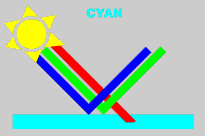The light + the eye = the color
Color definition
Color is our perception of the different wavelengths that make up visible light.
This set of wavelengths called the spectrum of light ranges from violet (wavelength = 380 nanometers) to red (wavelength = 720 nanometers).
Beyond these wavelengths, the light becomes invisible and we enter the field of ultraviolet (rays responsible for tanning) and infrared or heat radiation.
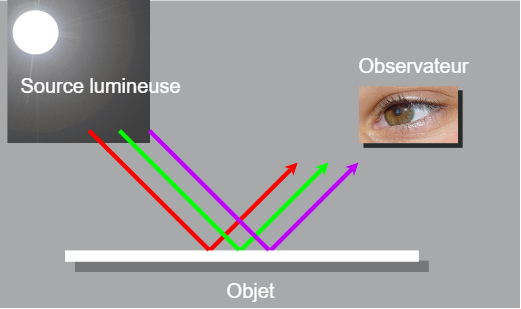
Three parts that influence the perception of colors:
The light source: emission of a light spectrum
The object : absorbs and reflects a part of the incoming light spectrum
The eye: receives the reflected part of the light spectrum of the object and also portions of ambient light.
Here is the spectrum of lights visible to the eye
Like the rainbow, it stretches from red to violet ranging from 380 nm to 720 nm

The eye is the result of a long evolution of a single skin cell that has specialized in feeling different fringes of electromagnetic radiation.
At the very beginning of evolution, the skin already had a sense of the perception of heat or cold.
When we are in the sunlight, the skin thermoreceptors give us a soft feeling.
It is a sensation caused by an electromagnetic wave called infrared (or heat).
The eye has exactly the same role: to collect information on electromagnetic frequencies, but in a much more elaborate and precise way.
The translation of these radiations by the brain is the sensation of color.
On the object itself, there is therefore no color.
It is simply the molecular structure of the object's surface, formed of bumps and pits, that allows certain frequencies to bounce back.
There are two types of photoreceptors involved in vision: rods and cones .
The sticks work in the presence of very little light. ... There are over 100 million rods in the human eye.
Cones need a lot more light to function and they are used to see colors
The cones are therefore responsible for color vision.
There are three kinds of cones:
- L (Long) cones, sensitive to "long" visible wavelengths, ie red
- M (Medium) cones sensitive to green
- S cones (Short ) sensitive to "low" wavelengths of the visible, so blue.
The eye is a sensor that interprets electromagnetic waves and sent them to the brain which will convert them into a sensation of color
White light
The light that groups together all the wavelengths of the visible spectrum is called white light.
It can be broken down using a prism thanks to the principle of refraction.
White light = Σ of the colors of the visible spectrum
Projection of a white light on a material
|
|
If we gaze at a white object, the 3 types of cones, red, green, blue, will be excited in the same way, and each will transmit a signal to the brain. This will then combine the three pieces of information, mixing the three colors to "create" the white. |
|
|
For black, the matter absorbs all the frequencies of the visible spectrum and therefore none of the cones will be excited and the absence of information will "create" the black. |
|
|
For red, the brain will receive a signal from the red cones, but not from the blues and greens. |
|
|
For green, the brain will receive a signal from the green cones, but not the blues and reds. |
|
|
For blue, the brain will receive a signal from the blue cones, but not from the greens and reds. |
|
|
For yellow, the brain will receive a signal of equal intensity from the green and red cones, but not the blue ones. |
|
|
For Magenta, the brain will receive a signal of equal intensity from the blue and red cones, but not the green ones. |
|
|
For Cyan, the brain will receive a signal of equal intensity from the green and blue cones, but not the red ones. |
If we gaze at a colored object, the 3 types of cones, red, green, blue, will be excited in a different way, and each will transmit a signal to the brain.
This will then combine the three pieces of information, mixing the three colors to "create" a color.
This color will correspond to the ratio of red, green blue, reflected by the material.
